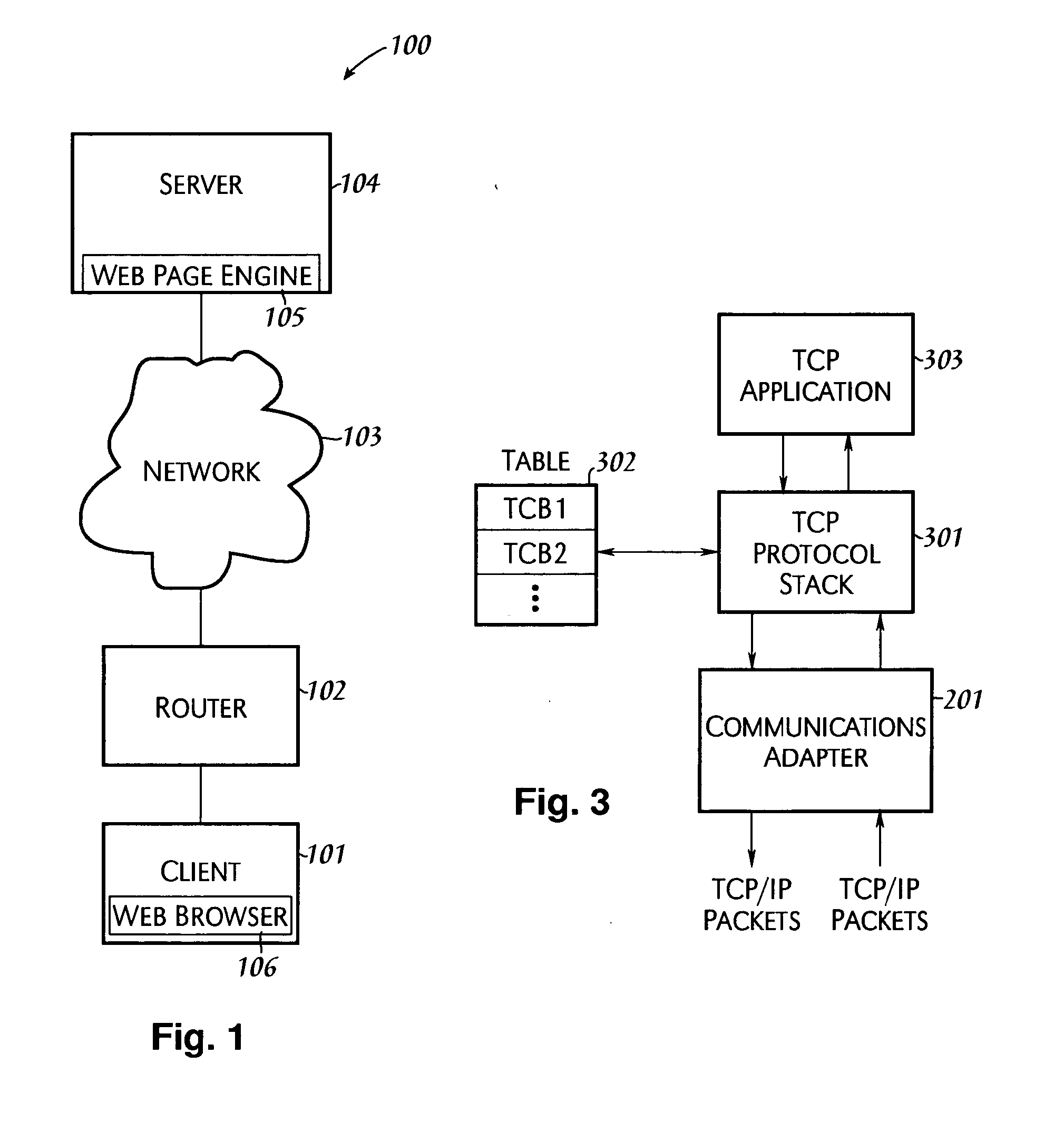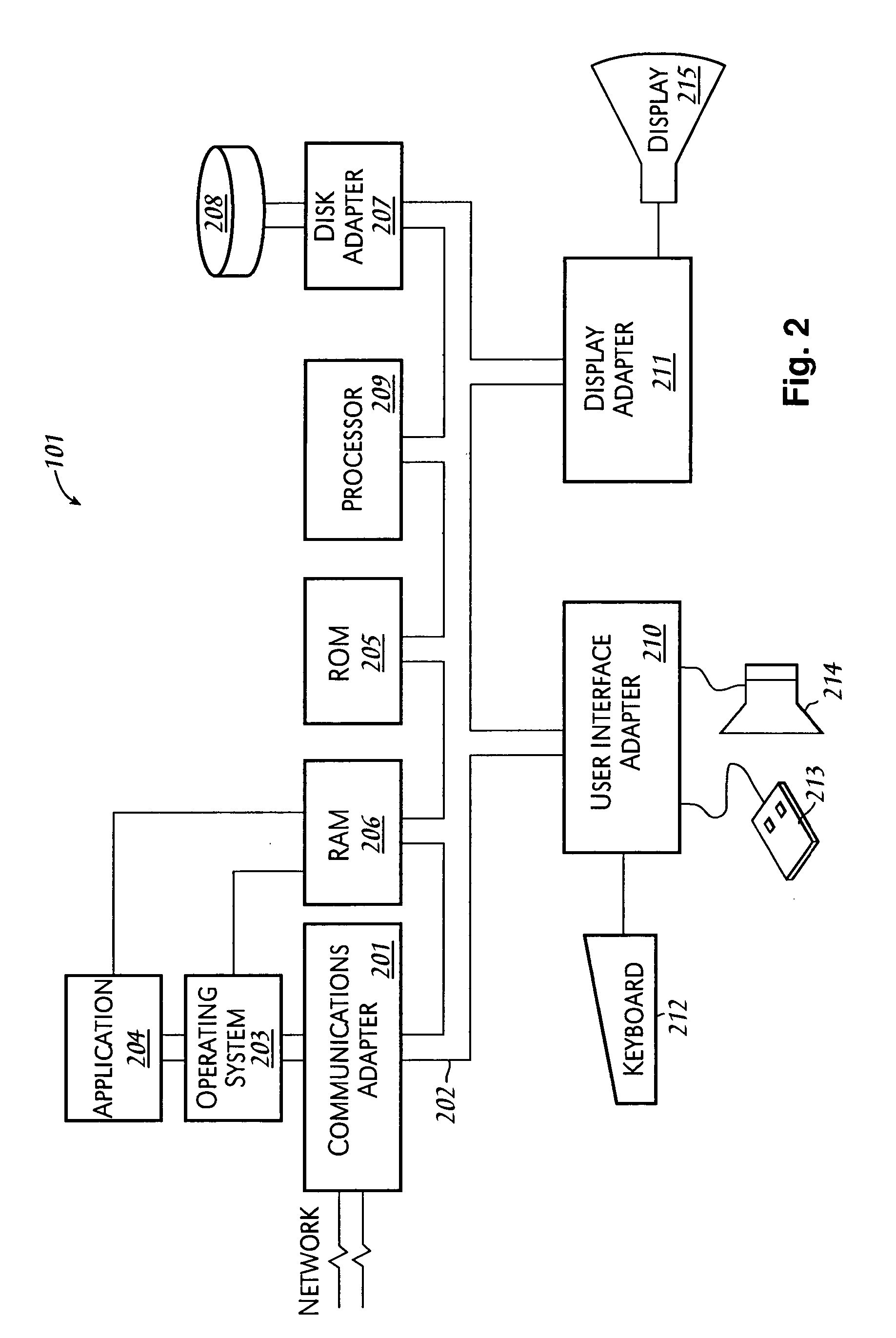Reducing memory accesses in processing TCP/IP packets
- Summary
- Abstract
- Description
- Claims
- Application Information
AI Technical Summary
Benefits of technology
Problems solved by technology
Method used
Image
Examples
Embodiment Construction
[0025] The present invention comprises a method, computer program product and system for processing TCP / IP packets of data with fewer memory accesses. In one embodiment of the present invention, a TCP protocol stack stores a payload of a received TCP / IP packet of data in a data fragment list. The TCP protocol stack may further read the header of the received packet to extract a value used to index into a table storing a list of transport control blocks. The TCP protocol stack may further perform a lock operation and a read operation on the transport control block indexed in the table. The TCP protocol stack may further transmit an indication to a TCP application to read the payload of the received packet. The TCP protocol stack may further transmit the payload of the received TCP / IP packet to the TCP application without requiring the application to perform a lock, read, write or unlock operation on the indexed TCB. The TCP protocol stack may directly transmit the payload since the T...
PUM
 Login to View More
Login to View More Abstract
Description
Claims
Application Information
 Login to View More
Login to View More - R&D
- Intellectual Property
- Life Sciences
- Materials
- Tech Scout
- Unparalleled Data Quality
- Higher Quality Content
- 60% Fewer Hallucinations
Browse by: Latest US Patents, China's latest patents, Technical Efficacy Thesaurus, Application Domain, Technology Topic, Popular Technical Reports.
© 2025 PatSnap. All rights reserved.Legal|Privacy policy|Modern Slavery Act Transparency Statement|Sitemap|About US| Contact US: help@patsnap.com



